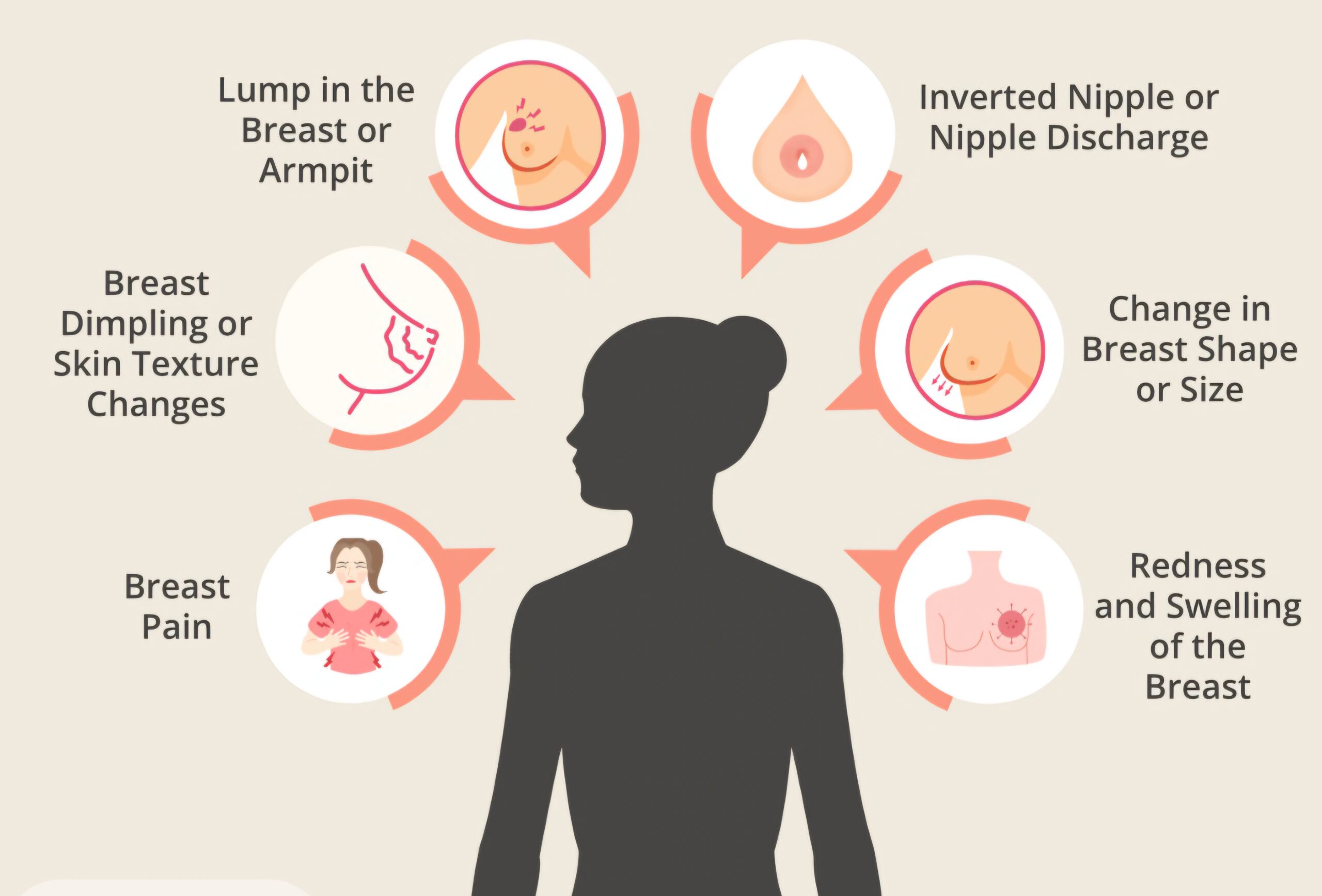Early Signs of Breast Cancer: Visual Symptoms Guide
Introduction to Breast Cancer
Breast cancer is a reality that affects millions of women and men worldwide. Early detection is crucial, as it greatly increases the chances of successful treatment. But how can one recognize the early signs? Visual symptoms often provide vital clues about what’s happening within your body.
Understanding these signs can be empowering. It not only helps you to take charge of your health but also encourages proactive steps toward seeking help when necessary. This guide will walk you through visual symptoms, , and more so that you feel equipped in recognizing potential issues before they escalate into something serious.
Importance of Early Detection
Early detection of breast cancer can significantly impact treatment outcomes. The sooner a diagnosis is made, the more options a patient may have.
Many women are unaware that early-stage breast cancer often presents no symptoms. This makes regular screenings and self-examinations critical.
Finding abnormalities at an earlier stage typically leads to less aggressive treatments and higher survival rates.
Moreover, awareness empowers individuals to take charge of their health actively. Knowledge about personal risk factors allows for tailored prevention strategies.
Timely intervention not only helps in managing the disease but also eases emotional burdens on patients and families alike.
By prioritizing early detection, we contribute to creating a supportive environment where resources and information are readily available for those navigating this journey.
Visual Symptoms and their Meanings
Visual symptoms of breast cancer can vary widely. Recognizing these signs early is crucial for effective treatment.
One common symptom is a change in the shape or size of the breast. If one breast appears larger or more uneven than the other, it’s worth investigating further.
Skin texture changes may also occur. Look for dimpling, puckering, or an unusual appearance similar to orange peel skin. These alterations could signal underlying issues.
Nipple discharge that isn’t related to breastfeeding should raise concern, especially if it’s bloody or clear fluid.
Swollen lymph nodes under the arm might be another indicator. This swelling often suggests that cancer has spread beyond its original site.
Each visual symptom tells a different story about your health status. Being aware of these changes empowers you to take action and seek medical advice promptly.
Self-Examination Techniques
Self-examination is a crucial step in monitoring breast health. It empowers you to notice any changes early on.
Start by standing in front of a mirror. Look for any visible abnormalities, such as lumps or skin dimpling. Check both breasts thoroughly while keeping your arms relaxed at your sides.
Next, raise your arms above your head and examine the shape and symmetry again. Pay attention to any unusual swelling or discoloration.
Then, use your fingers to feel for lumps. You can do this while lying down or standing up; just ensure consistent pressure with different parts of your fingers.
Remember to check the area around the nipple too. A change in texture or discharge may indicate issues worth discussing with a healthcare professional.
Regular self-exams build familiarity, making it easier to spot potential concerns quickly. Aim for once a month, ideally after your menstrual cycle ends if applicable.
When to Seek Medical Attention
If you notice any unusual changes in your breasts, it’s time to consult a healthcare professional. This could include new lumps, swelling, or persistent pain.
Don’t ignore skin changes either. Redness, dimpling, or puckering might signal an underlying issue that requires attention.
Nipple discharge is another sign to watch for—especially if it’s blood-stained or occurs without squeezing the nipple.
It’s essential to listen to your body. If something feels off and doesn’t seem right over two weeks, don’t hesitate to reach out for help.
Regular check-ups are vital too. Discuss any family history of breast cancer with your doctor during these appointments for personalized advice on screenings and preventive measures.
Taking action early can make all the difference in treatment outcomes. Trust your instincts; they’re there for a reason.
Prevention and Risk Factors
Understanding the prevention and risk factors associated with breast cancer is crucial. Certain lifestyle choices can significantly impact your risk level. Maintaining a healthy weight, engaging in regular physical activity, and following a balanced diet rich in fruits and vegetables are essential.
Family history plays a vital role as well. If close relatives have been diagnosed, your risk may be higher. Genetic mutations like BRCA1 and BRCA2 also increase susceptibility to the disease.
Hormonal factors cannot be overlooked either. Early onset of menstruation or late menopause can elevate risks due to prolonged exposure to estrogen.
Limiting alcohol intake and avoiding tobacco products contribute positively too. Regular screenings should not be neglected as they help catch any anomalies early on, making them easier to treat before they escalate into serious conditions.
Conclusion
Breast cancer is a serious health issue that affects many individuals. Understanding the early signs of breast cancer can make a significant difference in outcomes. By being aware of visual symptoms and practicing regular self-examinations, you empower yourself with knowledge.
Seeking medical advice when you notice changes is crucial. Early detection remains one of the best defenses against advanced stages of this disease. Additionally, understanding prevention methods and recognizing risk factors can further enhance your ability to stay proactive about your health.
Being informed and vigilant creates an environment where awareness flourishes. Remember, every individual’s experience may vary, so prioritize communication with healthcare professionals regarding any concerns or questions about breast health. Take charge today for a healthier tomorrow.
